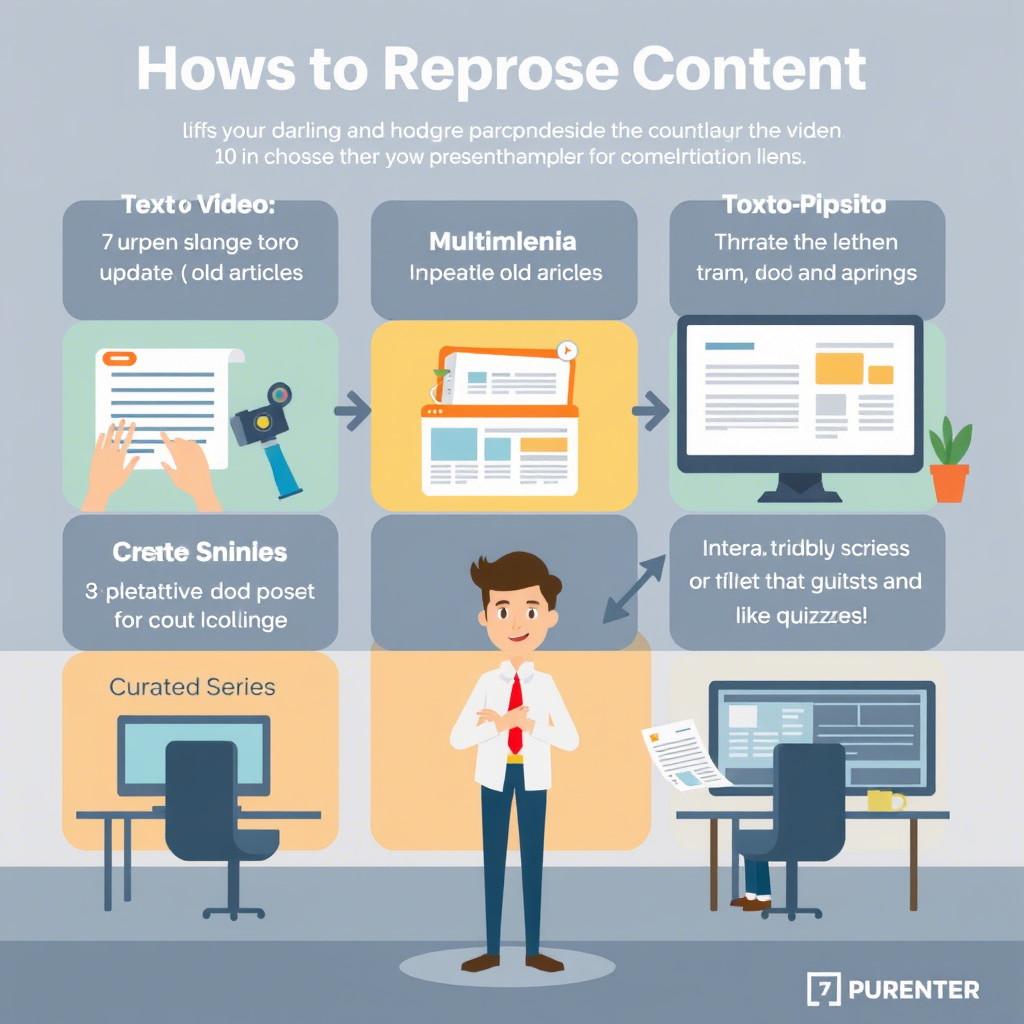In today’s fast-paced digital world, creating content is just the beginning. With so much information available online, standing out requires more than producing new material every day.
Repurposing existing content can be a game-changer for maximizing your reach and engagement without reinventing the wheel. In this article, we’ll explore how you can breathe new life into your old content, saving time while amplifying its impact.
Whether you’re a blogger, marketer, or entrepreneur, these strategies will help you get the most out of what you’ve already created.
Why Repurposing Content Matters
Creating high-quality content takes effort, resources, and creativity. However, many people overlook the potential of their existing work after it’s published.
By repurposing content, you can extend its lifespan and tap into audiences that may not have seen it initially. For instance, did you know that 60% of marketers struggle with content creation due to limited budgets? Instead of starting from scratch, why not transform your blog posts into videos, podcasts, or infographics?
Repurposing also helps keep your message consistent across platforms. When done right, it ensures that all your efforts align with your brand goals. Let’s dive deeper into practical ways to make the most of your content.
1. Transform Text Into Visuals
One of the easiest ways to repurpose content is by turning written material into visually appealing formats. Infographics, slideshows, and short video clips are highly shareable on social media platforms like Instagram, Pinterest, and LinkedIn.
For example, if you’ve written an in-depth guide about productivity hacks, break it down into bite-sized tips and create engaging visuals. Use tools like Canva or Adobe Spark to design eye-catching graphics. These visuals don’t just attract attention—they also cater to users who prefer consuming information through images rather than text.
Additionally, consider using screenshots or quotes from your original piece as part of your visual strategy. This approach keeps your audience connected to the source material while offering them fresh perspectives.
2. Leverage Multimedia Formats
Not everyone consumes content the same way. Some prefer reading articles, others enjoy listening to podcasts, and some love watching videos. To maximize exposure, adapt your content to fit different formats.
If you’ve written a detailed blog post, turn it into a podcast episode. Tools like Audacity or Anchor allow you to record audio effortlessly. You could even hire a professional voice actor if budget allows. Similarly, condense key points into a YouTube video or TikTok reel to capture shorter attention spans.
Here’s a tip: Start with your strongest content—perhaps a well-received article or presentation—and experiment with multimedia adaptations. Over time, you’ll discover which formats resonate best with your audience.
3. Update Old Content for Relevance
Your past content might still hold value, but trends change, and so does technology. Updating outdated pieces can bring them back into the spotlight. Add recent statistics, include current examples, or address emerging questions related to your topic.
Let’s say you wrote an article two years ago about remote work. While the core idea remains relevant, incorporating data from the pandemic era would give it renewed significance. Updating titles, meta descriptions, and internal links can also improve SEO performance, making your content easier to find.
This process doesn’t need to feel overwhelming. Focus on one or two older pieces each month and refresh them incrementally. Your readers will appreciate the effort, and search engines will reward you with better rankings.
4. Create Curated Series or Playlists
Another effective method is bundling similar content into cohesive collections. If you’ve published multiple articles on a specific subject, compile them into an eBook, course, or playlist. This adds perceived value and makes it simpler for users to consume comprehensive information.
For example, if you run a fitness blog, gather all your workout routines into a downloadable PDF or YouTube playlist. Offer it as a free resource or premium product depending on your business model. Creating series also encourages repeat visits since visitors know they can access additional episodes or chapters over time.
Remember, consistency is key here. Ensure each item within the collection complements the others, providing seamless continuity for your audience.
5. Engage Your Audience Through Interactive Content
Interactive elements such as quizzes, polls, and Q&A sessions encourage active participation. They also provide valuable insights into your audience’s preferences and pain points. Suppose you’ve written several posts about career development. Why not create a quiz titled “What’s Your Career Personality?” Based on user responses, suggest relevant articles or resources tailored to their needs.
Moreover, interactive content tends to perform exceptionally well on social media. Platforms like Facebook and Twitter thrive on user engagement, meaning your repurposed content has a higher chance of being shared widely. Encourage followers to participate and leave feedback, fostering a sense of community around your brand.
Conclusion
Repurposing existing content isn’t just about recycling—it’s about optimizing and expanding your reach. From transforming text into visuals to leveraging multimedia formats, there are countless ways to revitalize your library of work. Updating old content ensures relevance, while curated series and interactive features enhance user experience.
As you implement these strategies, remember to track results and adjust accordingly. Analytics tools can reveal which methods yield the best outcomes, helping you refine your approach over time. Finally, don’t forget to engage with your audience by asking for their input or inviting them to share your creations.
So, take a moment to review your archive. What hidden gems lie waiting to shine again? Start small, stay consistent, and watch your content gain the exposure it deserves. Now, tell us—what’s your favorite way to repurpose content? Share your thoughts below!




